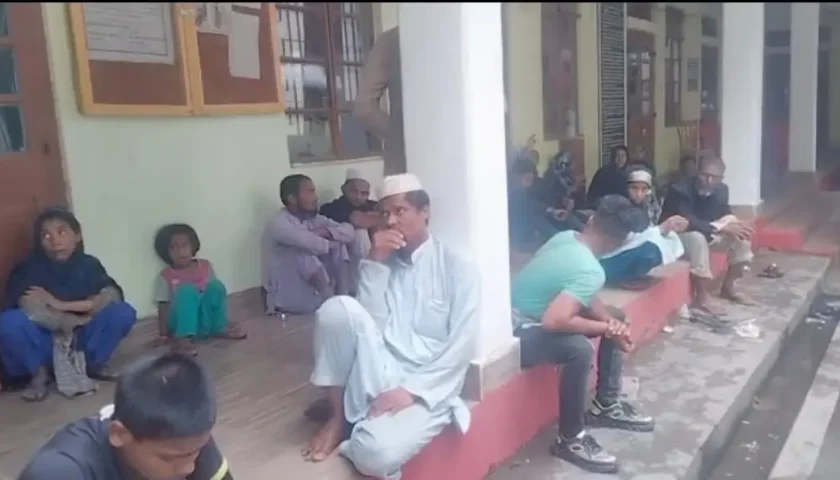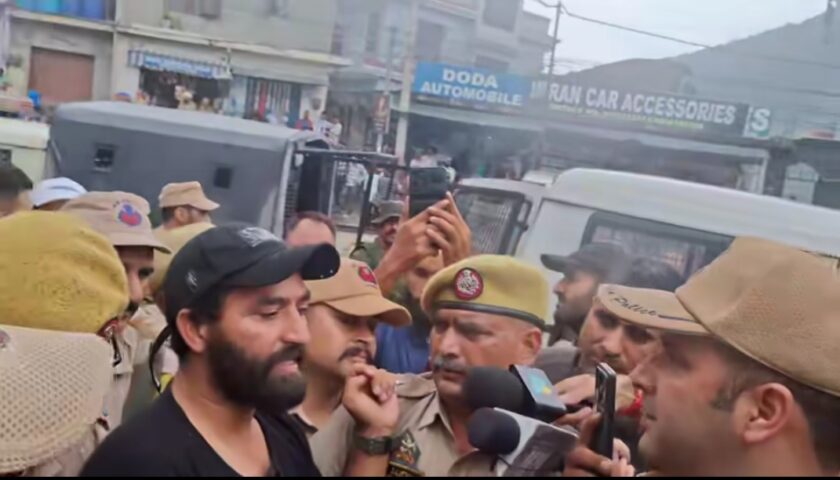Sohian Villagers Protest Punjab’s Land Pooling Scheme, Ban Government Entry Over Farmland Fears
By: Javid Amin | 01 Aug 2025
A Flashpoint in the Land Pooling Debate
The otherwise quiet village of Sohian Kalan, located near Sangrur city in Punjab, has become the epicenter of resistance against the state’s ambitious land pooling scheme, which aims to acquire 568 acres of agricultural land in the area.
Sohian is just one part of a broader plan that covers 65,533 acres across 21 towns under the Punjab Urban Development Authority (PUDA), but it has become a symbol of rural defiance.
The Protest: “We Will Not Give Up Our Fields”
On Friday, villagers came out in large numbers, staging a vocal protest and placing warning signs banning entry of government officials into their village.
The signs read:
“No official will be allowed to enter Sohian without the consent of the panchayat.”
Residents say this is not merely about farmland—it’s about food security, economic survival, and cultural identity.
Voices from the Ground
Sinder Kaur, 70:
“If our lands are snatched, how will we eat? Farming is our life. Without land, we are nothing.”
Baljeet Kaur, 60:
“They talk of development, but for us, this is destruction. What will we give our children if the fields are gone?”
Many of these villagers are small or marginal landowners, who say they were never properly consulted, and only learned about the scheme through government notices and media reports.
Panchayat Takes a Stand
Sohian’s Gram Panchayat, led by Sarpanch Ranjit Singh, has firmly rejected the government’s claims of “consensual acquisition.”
Despite not owning land himself, Singh passed a resolution along with the village council, opposing the scheme and questioning its transparency and legality.
“What consent are they talking about? No one here has agreed to give up their land. We passed a resolution to protect our rights,” Singh told reporters.
What Is the Punjab Land Pooling Scheme?
The Land Pooling Policy is a mechanism where landowners pool their lands voluntarily for urban development projects, and in return receive a portion of developed plots instead of monetary compensation.
According to the government:
-
The scheme aims to ensure fair compensation and land reallocation.
-
It is intended to promote planned urban growth without full acquisition.
But critics say:
-
There is lack of clarity on how reallocation happens.
-
Smaller farmers may be left with inadequate or commercially unusable plots.
-
Legal safeguards and dispute mechanisms are vague, especially for vulnerable communities.
Bigger Picture: Punjab’s Rural-Urban Tug of War
This protest is not an isolated incident. It is part of a larger rural backlash brewing across Punjab, where urban expansion is seen as a direct threat to traditional agrarian economies.
Several key issues have emerged:
-
Loss of farmland in an already shrinking agricultural landscape
-
Distrust of bureaucratic processes and “consultations on paper”
-
Perceived betrayal by elected representatives
-
Environmental concerns, such as water depletion and habitat loss
In the words of a protesting youth:
“Why should we suffer so that cities can expand? Let them build their cities on barren land, not our fields.”
Political Fallout: A Test for the AAP Government
The protest puts Chief Minister Bhagwant Mann’s Aam Aadmi Party (AAP) in a tricky spot:
-
On one hand, AAP has promised inclusive development and farmer welfare.
-
On the other, the land pooling scheme is seen as pro-developer and anti-farmer, especially when consent appears superficial.
Opposition parties—Congress, SAD, and BJP—have already started amplifying the protest, framing it as a failure of AAP’s rural engagement.
“This is another betrayal of Punjab’s farmers,” said a local Congress MLA. “First, we had farm laws. Now, we have urban land grabs.”
What’s at Stake?
For Villagers:
-
Potential loss of ancestral land
-
Economic uncertainty
-
Erosion of rural lifestyle and heritage
For the Government:
-
Credibility on farmer-centric policies
-
Legal battles if villagers move court
-
Potential spillover protests in other towns
What’s Next?
As of now:
-
The Punjab Urban Development Authority (PUDA) has not responded publicly to Sohian’s resolution.
-
Villagers have vowed to intensify protests if the government does not cancel the scheme.
-
Legal advisors have been approached to challenge the policy in the High Court.
This situation could turn into a major agrarian movement if mishandled—echoing the 2020–21 farmers’ protests, which also began with quiet resistance before becoming a national issue.
Final Word: Beyond Land—This Is About Dignity
Sohian’s protest is a microcosm of India’s rural anxieties in the face of unchecked urbanization. It’s a clash between bulldozers and bullocks, concrete and crops, spreadsheets and soil.
And as villagers continue their resistance, they’re not just defending land—they’re defending a way of life.
“We are farmers, not just landowners. We grow food, not profits,” said one elderly protester. “This land is our mother. And we will protect her.”




